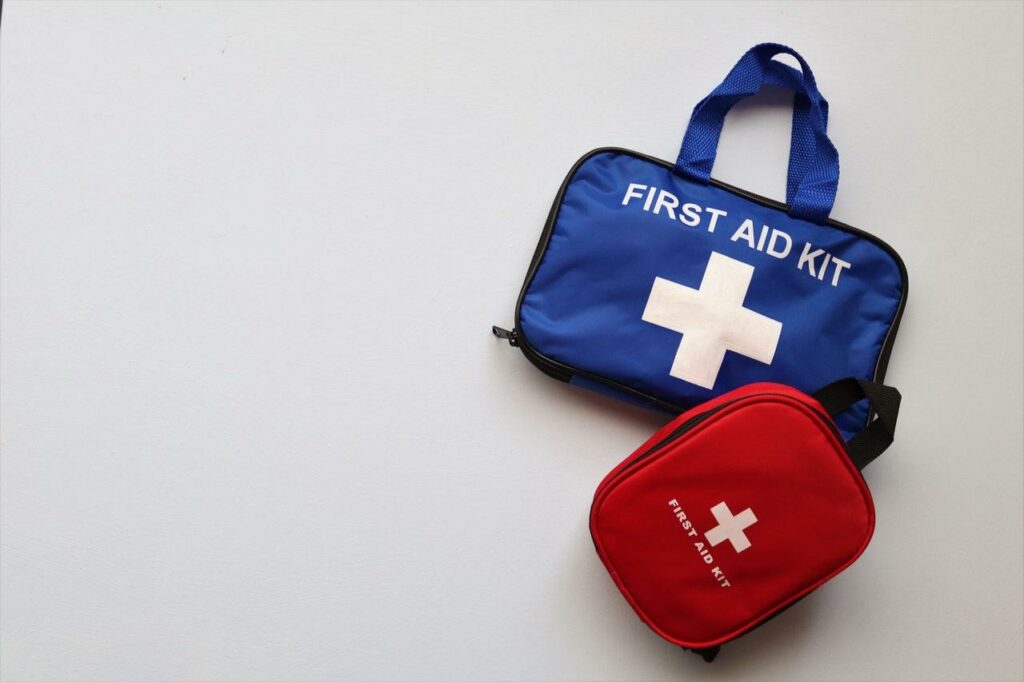
In an office without heavy machinery or fast-paced movement, first aid training often takes a backseat. According to OSHA, there are about 700 fatal slips and falls in workplaces every year, while non-fatal falls account for even more injuries. These can be the result of tripping on carpets, falling on stairs, or slipping on wet floors — obstacles found in almost every office.
That doesn’t take other medical emergencies such as seizures, cuts, and heart attacks into account. While you should always call 911 in an emergency, here are six tips on rendering aid to coworkers and coming up with a comprehensive first aid plan.
1. Understand What First Aid Is
When a coworker suffers an injury or sudden illness, helpful coworkers don’t typically administer medical care. They provide necessary assistance needed before medical professionals arrive.
To illustrate this, first aid training courses sometimes highlight the three P’s as the purposes of first aid:
- Preserve life
- Prevent further injury
- Promote recovery
This can be cleaning, dressing, and applying pressure to a wound or keeping a seizing coworker from hitting their head. In some cases, that might be all the care a person needs. If not, call 911 as early as possible.
2. Familiarize Yourself With Common Workplace Medical Conditions
While falls and cuts are always a threat, coworkers might suffer from other emergencies that aren’t as apparent as a tumble down the stairs. You may not be a medical professional, but recognizing symptoms is vital in these potentially fatal scenarios. Here are some of the most common medical emergencies that happen around offices.
Heart Attacks and Cardiac Arrest
For heart attacks, check for nausea, chest pain, and discomfort in the arm or shoulder. In the case of cardiac arrest, people become dizzy, short of breath, and ultimately pass out. With cardiac arrest, chest compressions and CPR may restart the heart.
Strokes
People suffering from strokes commonly exhibit loss of balance, face drooping, impaired speech, and weakness in their extremities. They may also report half of their body feeling numb.
While strokes aren’t generally helped by first aid, prudent coworkers should note when symptoms first began, keep the person awake by talking and call 911 immediately. Never give a stroke victim food, water, or medication as they may quickly lose the ability to swallow.
Seizures
Seizures manifest themselves in different ways, but look out for sudden staring, jerking movements, sudden falls, and unexplained confusion. Assist by easing the person to the floor, turning them on their side for easier breathing, and putting something soft and flat under their head.
If a seizure involves convulsions, never attempt to hold the person down or place anything in their mouth. Clear the area of obstacles and when the person is conscious, help them to a safe area and explain what happened. Seizures don’t always require medical attention, so consult the CDC’s seizure first aid guide to identify when calling 911 is necessary.
Respiratory Illnesses and Blockages
Respiratory emergencies involve choking, asthma, and allergic reactions. For choking, employ the five and five approach. This means bending the person forward so their face is aimed at the ground then hitting their back five times between the shoulder blades. This is followed by five abdominal thrusts, also known as the Heimlich maneuver.
Asthma and allergic reactions are characterized by wheezing, swelling, hives, turning white or blue, and lack of breathing. For asthma attacks, help the person find their inhaler. If that doesn’t help or they don’t have it, immediately call 911.
When someone suffers a severe allergic reaction, have them lay flat on their back, then inject them with an adrenaline injector such as an EpiPen. Then, call 911 so they can be fully treated and observed.
3. Keep First Aid Supplies in Stock
To be fully prepared for those conditions and more, maintain fully-stocked and easily-accessible first aid kits. A basic office first aid kit should include:
- Bandages and gauze of various sizes
- Medical tape
- Antiseptic wipes
- Compresses and cold packs
- Eyewash
- Burn cream
- Antibiotic ointment
- Masks for rescue breathing and CPR
Other than first aid treatments, first aid kits should also include personal protective equipment such as gloves, face shields, and masks. Be sure a directory of local health services and hospitals is posted nearby.
4. Assess the Scene
Before breaking into the first aid station, quickly assess nearby hazards. Keep an eye out for broken glass, furniture, and other obstacles that may cause you or the injured party harm. If possible, have someone else clean the scene and ensure any passersby are aware of danger.
5. Communicate and Cooperate
As you approach the scene, communicate with the injured person. If conscious, ask them about their injuries. Always tell them what you’re doing, including calling an ambulance or what kind of aid you’re providing.
If someone with more training or knowledge approaches, let them take over and bring them up to speed. You may continue aid by bringing them supplies or calling emergency services.
6. Get First Aid Training
To get the most out of your office’s first aid kit, schedule on-site first aid training. A robust program instructs offices how to:
- Conduct primary and secondary surveys
- Safely control and dress bleeding wounds
- Treat burns
- Manage diabetic emergencies, poisoning and seizures
- Stay protected from bloodborne pathogens and other risks
This course also includes CPR training so offices can also learn how to use defibrillators, clear airways, and recognize the signs of medical emergencies.
Through Red Cross-approved courses, ROI Safety Services teaches these potentially lifesaving first aid measures and more to office workers across California. By coming to you, we tailor sessions to each office environment. Contact ROI for a quote on on-site first aid courses or to schedule one today.

